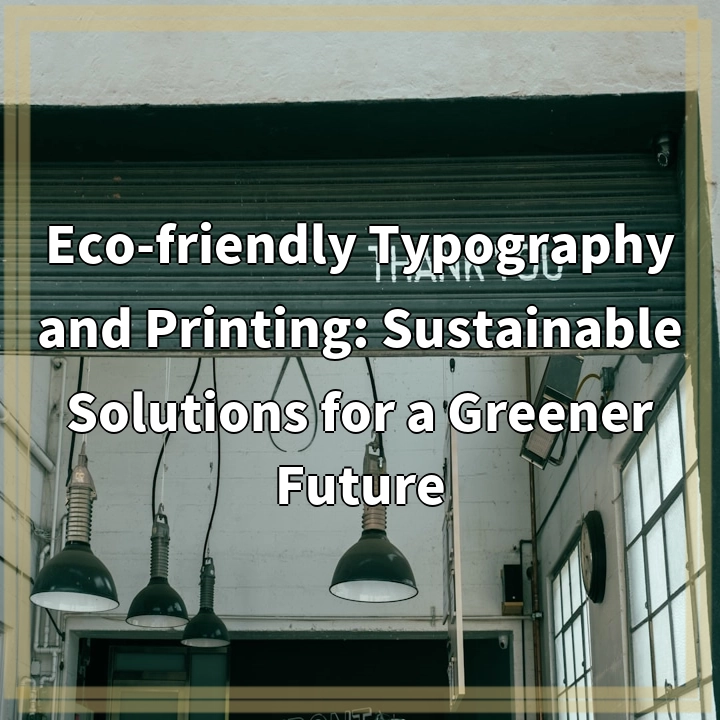
What is Eco-friendly Typography and Printing?
Eco-friendly typography and printing refers to the practice of using sustainable and environmentally conscious methods in the design and production of typographic materials, such as books, magazines, posters, and packaging. It aims to minimize the negative impact on the environment by reducing waste, conserving resources, and promoting responsible manufacturing processes.
Real-World Problems Associated with Eco-friendly Typography and Printing
Despite the growing awareness of sustainability issues, the field of typography and printing still faces several real-world challenges:
1. Paper Consumption:
One of the primary environmental concerns in the industry is the high demand for paper. The production of paper requires the cutting down of trees, contributing to deforestation and habitat destruction. Additionally, large amounts of energy and water are required during the manufacturing process.
2. Toxic Chemical Usage:
Traditional printing methods involve the use of inks, solvents, and coatings that contain hazardous chemicals and volatile organic compounds (VOCs). These substances can be harmful to both human health and the environment, contributing to air pollution and water contamination.
3. Energy Consumption:
The printing industry is known for its high energy consumption. Energy-intensive processes, such as printing presses and finishing equipment, contribute to greenhouse gas emissions and contribute to climate change.
4. Waste Generation:
A significant challenge in the industry is the generation of waste, including unused paper, ink cartridges, and packaging materials. Improper disposal of these materials can lead to pollution and contribute to landfill overcrowding.
5. Lack of Awareness and Education:
There is often a lack of awareness among designers, printers, and consumers about eco-friendly alternatives and sustainable practices in typography and printing. This lack of knowledge hinders the adoption of greener solutions and perpetuates unsustainable practices.
In conclusion,
Eco-friendly typography and printing offer an opportunity to address these real-world problems and promote a greener future. By implementing sustainable practices such as using recycled paper, vegetable-based inks, and adopting energy-efficient technologies, the industry can help reduce its ecological footprint and contribute to a more sustainable world.

Solutions to Eco-friendly Typography and Printing
Addressing the real-world problems associated with eco-friendly typography and printing requires implementing the following sustainable solutions:
1. Sustainable Paper Alternatives:
Switching to recycled paper or paper made from sustainable sources, such as bamboo or agricultural residues, can help reduce the demand for virgin wood pulp and minimize deforestation.
2. Eco-friendly Inks and Coatings:
Using vegetable-based inks and eco-friendly coatings instead of conventional petroleum-based ones can significantly reduce the release of toxic chemicals and VOCs into the environment.
3. Energy-efficient Processes:
Adopting energy-efficient technologies and practices, such as using energy-saving printing presses, LED lighting, and optimizing production schedules, can help minimize energy consumption and decrease greenhouse gas emissions.
4. Waste Reduction and Recycling:
Implementing waste management strategies, including proper sorting and recycling of paper, ink cartridges, and packaging materials, helps divert waste from landfills and promotes a circular economy.
5. Education and Awareness:
Providing information and raising awareness among designers, printers, and consumers about the importance and benefits of eco-friendly typography and printing can drive the adoption of sustainable practices and promote a greener industry.
In conclusion,
By embracing these solutions, the field of eco-friendly typography and printing can pave the way for a more sustainable future. Implementing sustainable paper choices, using eco-friendly inks and coatings, optimizing energy consumption, minimizing waste generation, and promoting education and awareness are essential steps towards creating a greener and more environmentally responsible industry.















